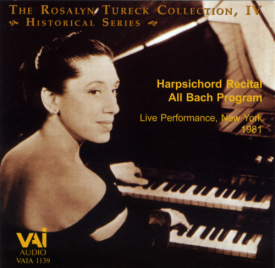

Immediately recognisable, this opening prelude from the first volume of the WTC exists in several earlier versions: it first appeared in 1720 in the Notebook for Wilhelm Friedemann Bach, compiled by JS Bach for his 9-year-old son, and the prelude was also copied by Bach’s second wife Anna Magdalena in her 1725 Notebook.Īlthough devoid of any melodic line and constructed from repetitions of the same simple motif – an arpeggiated chord – Bach exploits unexpected harmonic turns to produce a masterful underlying voice-leading that is not as regular as one might anticipate. The first volume was composed in 1722 "for the profit and use of musical youth desirous of learning, and especially for the pastime of those already skilled in this study", with the second volume following some 20 years later. They are arranged in chromatic order starting with C major, then progress through each subsequent key: C minor, C-sharp major, C-sharp minor and so on. Nevertheless, his keyboard works, and The Well-Tempered Clavier in particular, survived him and were closely studied and highly regarded by composers like Haydn, Mozart, Beethoven, Chopin and many more.īoth volumes of The Well-Tempered Clavier (WTC) consist of 24 preludes paired with 24 fugues. On his visit to Frederick’s court in Potsdam in 1747 he was referred to as the 'Old Bach', with old meaning both elderly, and severely out of fashion. It would be interesting to know if certain opinions held by Bach’s contemporaries and other influential people, such as Frederick the Great, may have differed in this light.Įven before the last years of his life, JS Bach was regarded as an outdated musician. After many decades of intense research and study of his music, Bach is now considered one of the most genius composers of all time, if not the greatest. Throughout Bach’s life his reputation as an extraordinary keyboard player dominated any renown as a composer and teacher. The 1829 performance of St Matthew Passion in Berlin, organised and directed by Felix Mendelssohn, began the slow Bach revival. NWC.In the nineteenth century, only a small number of music lovers, mostly in Germany, knew anything of JS Bach and his musical works.
#Bach harpsichord series
May 1: Chamber Music Series - Schubert Octet: George Walker: “Music for Brass, Sacred and Profane” Lansing McLoskey: “Specific Gravity”: 2.72 Schubert: Octet. Michael Tilson Thomas, conductor Program TBA. NWC.Īpril 16: Sounds of the Times Series - Primous Fountain: An American Original. NWC.Īpril 3: Sounds of the Times Series - Songs of Hope: Matthias Pintscher, conductor Ben Fryxell, Cello Fellow Bernd Alois Zimmermann: “Canto di Speranza” (Song of Hope) Helmut Lachenmann: “Schreiben.” NWC.Īpril 9: Saturday Evening Series - Latin Love and Lore: Teddy Abrams, conductor Aaron Copland: “El Salón México” Leonard Bernstein: Symphonic Dances from West Side Story Gabriela Lena Frank: “Concertino Cusqueño” Dafnis Prieto: Work TBA for Latin Ensemble and Orchestra.


March 20: Chamber Music Series - Then and Now: Grażyna Bacewicz: Quartet for Four Violins Fernanda Navarro: “Parthenogenesis” Ruth Crawford Seeger: Suite for Wind Quintet Hannah Kendall: “Verdala” Brahms: Piano Quintet.


 0 kommentar(er)
0 kommentar(er)
